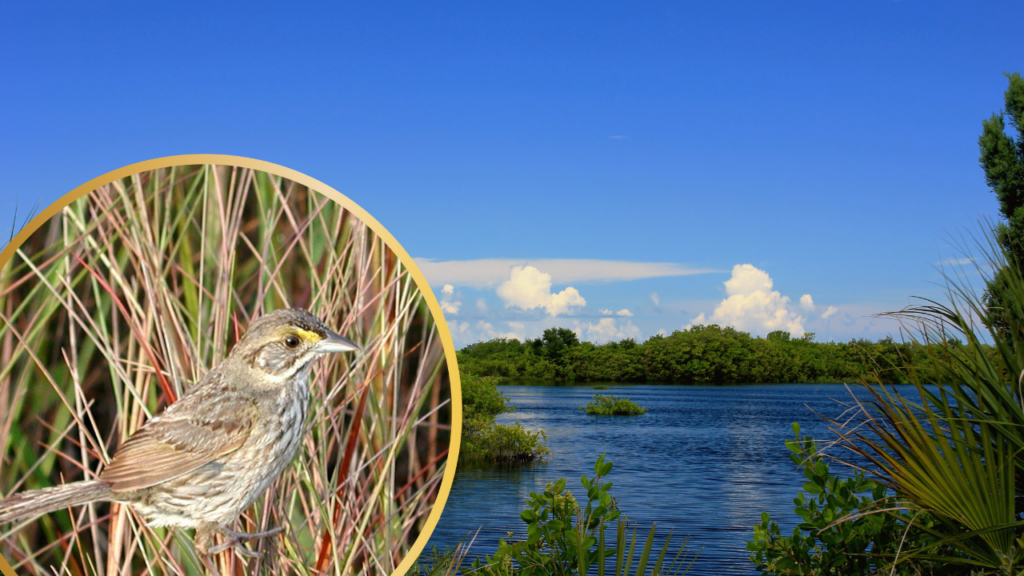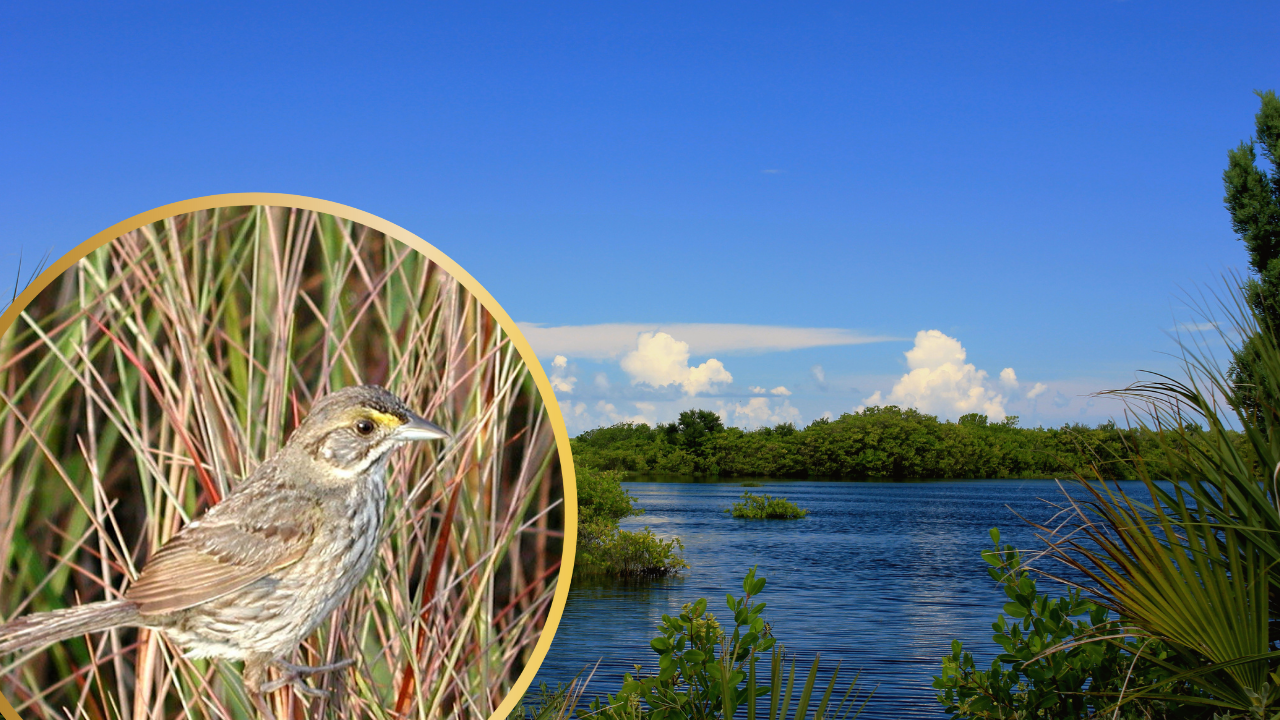What many don’t know how there are little sparrows native to Florida that are so endangered, they are on the verge of extinction. Even more important is how the Cape Sable seaside sparrow is so significant to the US and Florida because the Everglades is the only region where you can spot it, although the bird is a highly secretive one. Today this tiny bird is facing mounting challenges that threaten its survival. With habitat pressures intensifying due to complex water management systems and the looming threat of rising sea levels, conservationists are embarking on a groundbreaking initiative to ensure this species doesn’t fade into extinction.
The Cape Sable Seaside Sparrow: An Endangered Resident of the Everglades

The Cape Sable seaside sparrow, a diminutive bird adorned with brown speckles and a hint of yellow near its eyes, has long called the marl prairies of the Everglades home. This elusive species thrives in the unique ecosystem of southern Florida. However, its numbers have dwindled alarmingly, with recent counts indicating a mere 2,176 individuals remaining, including just 136 males. Recognizing its precarious status, the sparrow was federally listed as endangered in 1967.
Complex Water Management: A Double-Edged Sword
The Everglades’ intricate water management infrastructure, designed to support Florida’s growing population and agricultural demands, has inadvertently disrupted the natural water flow essential for the sparrow’s habitat. During nesting seasons, water control structures are often closed to protect the ground-nesting sparrows. While this measure safeguards the birds, it hampers the historic southward flow of water, leading to unintended ecological consequences, such as flooding in areas vital to the Miccosukee Tribe and other native species.
Rising Sea Levels: An Imminent Threat

Beyond infrastructural challenges, the specter of climate change looms large. Projections indicate that the Gulf of Mexico’s tides could surge by one to two feet over the next half-century. This escalation threatens to inundate the sparrow’s already limited habitat, further endangering its existence. Encroaching mangroves, propelled by rising sea levels, are altering the landscape, making it less hospitable for the sparrows.
According to a study by the U.S. Geological Survey, the Cape Sable seaside sparrow is facing a steadily shrinking habitat as sea levels continue to rise, Mangroves—coastal trees with roots that seem to float above the water—are already beginning to invade the sparrow’s territory, putting even more pressure on the bird’s fragile population. Because the sparrow has a limited range and rarely flies far, it’s less equipped to adapt to these environmental changes. The study suggests that boosting freshwater flows could help buffer the effects of rising tides. It also raises the possibility of relocating the sparrows as a potential conservation strategy.
A Bold Step: Initiating a Captive Breeding Program
In response to these mounting pressures, conservation agencies have proposed an unprecedented measure: a captive breeding and reintroduction program for the Cape Sable seaside sparrow. The South Florida Water Management District’s governing board has committed an initial $584,322 to this five-year initiative, set to commence next year. The U.S. Fish and Wildlife Service emphasizes that this program aims to “minimize the further decline of species in the short term and build resilience as Everglades restoration delivers remedies to conserve the sparrow on the landscape in the long term.”
Bird populations across the U.S. have taken a significant hit over the past 50 years, with a recent assessment from the National Audubon Society revealing that nearly one-third of the nation’s bird species—229 in total—are now considered high or moderate conservation concerns. The State of the Birds report, released in March, highlights grassland and aridland birds as being particularly vulnerable, having seen their populations decline by more than 40 percent since 1970.
Lessons from the Florida Grasshopper Sparrow

This approach draws inspiration from the successful captive breeding efforts for the Florida grasshopper sparrow, North America’s most endangered bird. Initiated nearly a decade ago, that program faced initial skepticism but has since bolstered the wild population from a mere 80 individuals to over 200. The release of the 1,000th captive-raised Florida grasshopper sparrow last summer stands as a testament to the potential efficacy of such conservation strategies.
Balancing Conservation with Ecosystem Restoration
While the captive breeding program offers hope, experts stress the importance of holistic ecosystem restoration. Eve Samples, executive director of Friends of the Everglades, underscores the need to “stay focused on true Everglades restoration,” advocating for reinstating natural water flows to benefit not only the sparrow but the broader array of species, including humans, that depend on this unique environment.
The plight of the Cape Sable seaside sparrow serves as a poignant reminder of the intricate interplay between human intervention and nature. As Florida grapples with the dual challenges of habitat preservation and climate change, collaborative and innovative conservation efforts become paramount to ensure that this delicate songbird continues to grace the Everglades for generations to come.

Andrew Alpin from India is the Brand Manager of Doggo digest. Andrew is an experienced content specialist and social media manager with a passion for writing. His forte includes health and wellness, Travel, Animals, and Nature. A nature nomad, Andrew is obsessed with mountains and loves high-altitude trekking. He has been on several Himalayan treks in India including the Everest Base Camp in Nepal.






